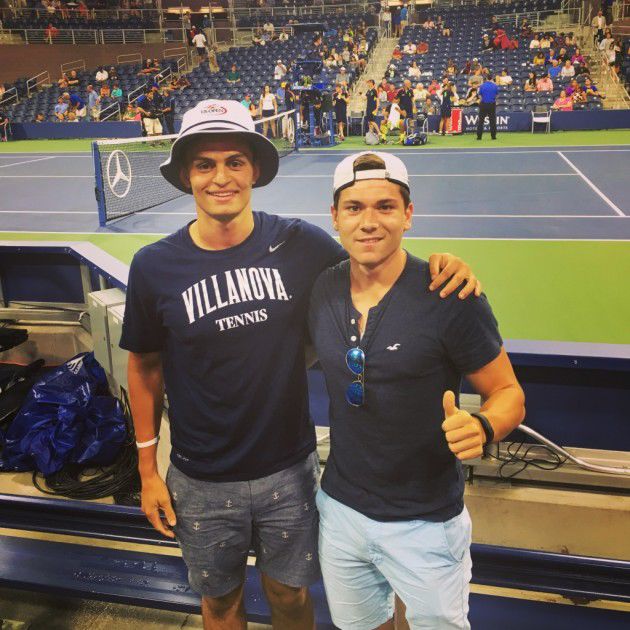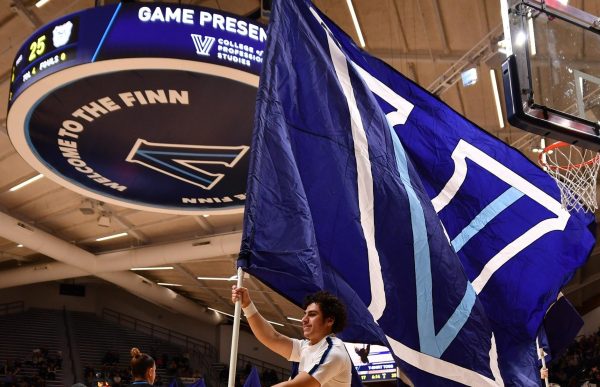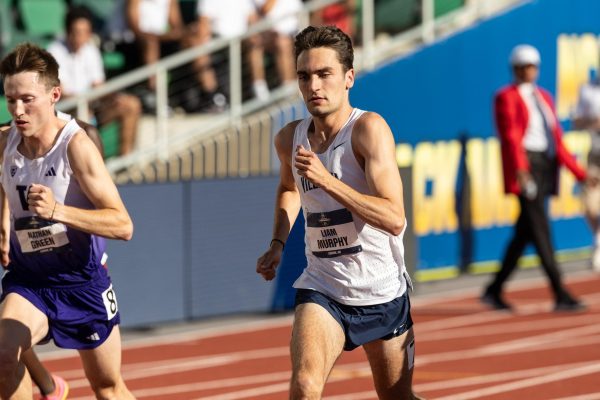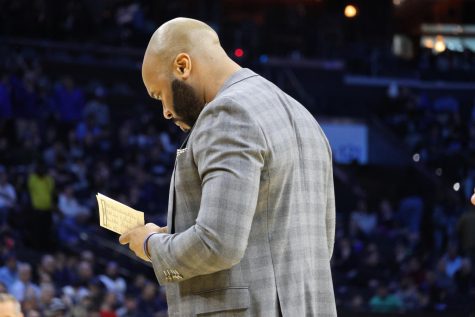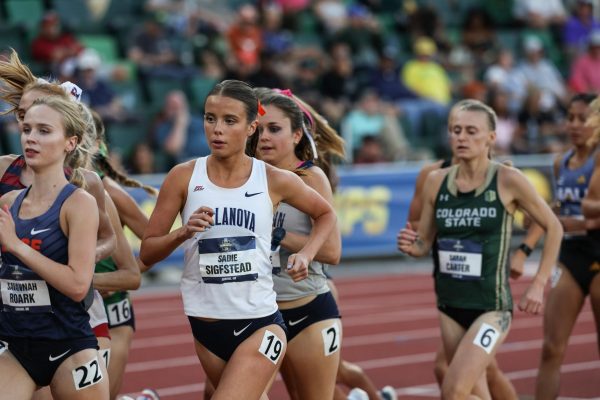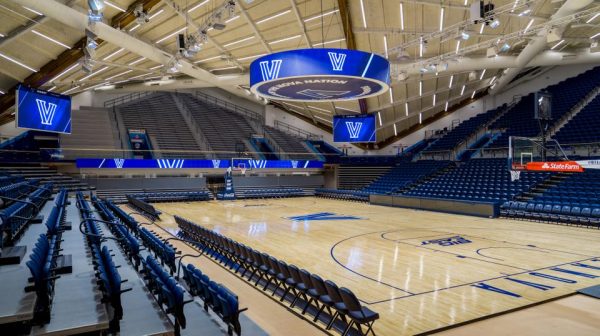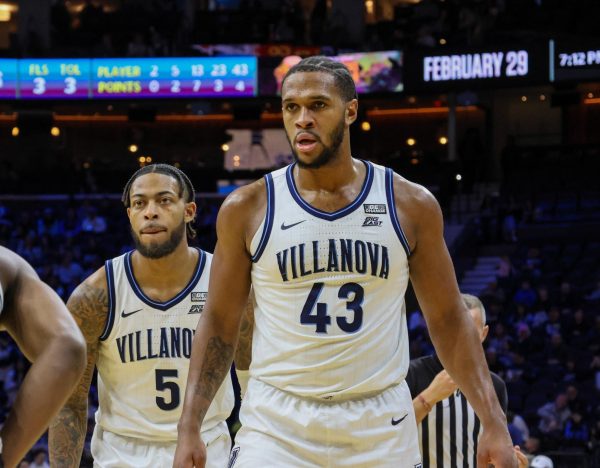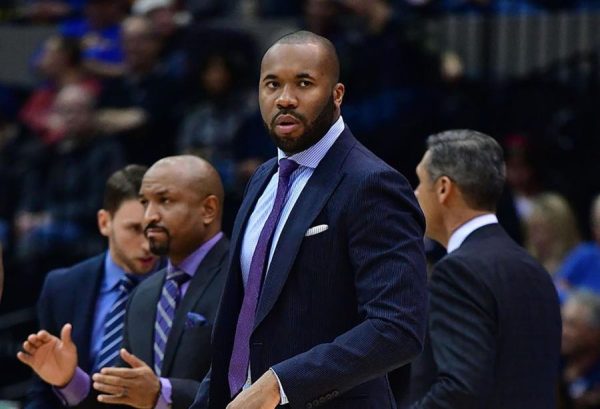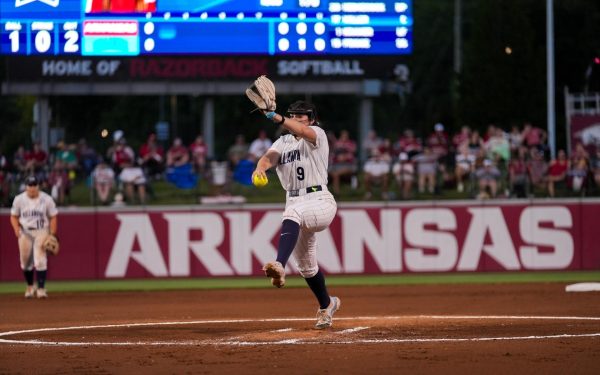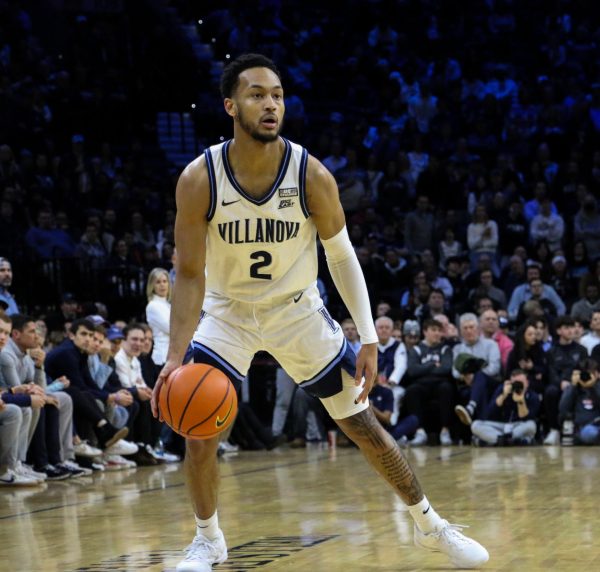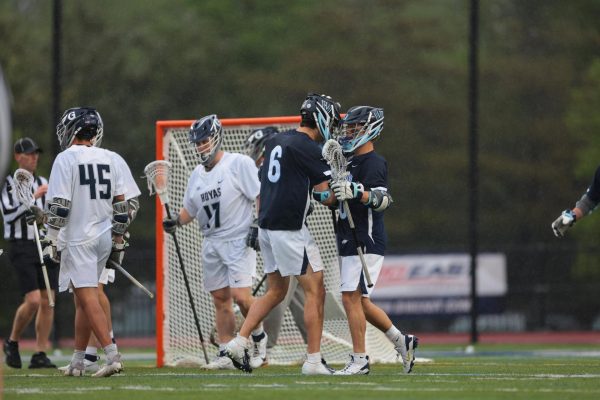The Bright Lights of the U.S. Open
September 13, 2016

Courtesy of Nova Tennis
I didn’t know whether to be bummed or grateful that their grunts aren’t as loud as ESPN makes them out to be.
That was my first impression of the U.S. Open as I sat in my $35, 300-level seat of Arthur Ashe Stadium at the Billie Jean King National Tennis Center in Queens, N.Y. Thanks to a stolen promotional code for two-for-one tickets, I attended the evening session on Labor Day as well as the day session on Tuesday (sorry for skipping class, Professor Metzger).
And I wasn’t the only Villanovan there. Seniors Luis Miranda and Karim Hallaba of the varsity men’s tennis team were in attendance for both the day and night sessions the Thursday before Labor Day weekend. Unlike myself, they had box seats in Arthur Ashe, the main stadium of BJK Tennis Center.
“My first paycheck from my summer internship went straight into these tickets,” Miranda said.
Also unlike myself, it wasn’t their first rodeo. Miranda attended the quarterfinals of 2014, and due to his proximity to N.Y.C. as a Connecticut native, Hallaba has been attending the U.S. Open almost every year since he was 10.
“It’s always a great time going to the Open,” Hallaba said. “Everyone there is a huge tennis fan and is really into the whole experience.”
I was just happy that I made it to Queens at all, considering I bought my bus ticket the morning-of, using a company called “Chinatown Buses,” which operates under the business model of taking passengers to and from Chinatowns of major cities.
But once I arrived, I felt like I owned the place. As a United States Tennis Association (USTA) member and Chase cardholder, I was collecting free stuff left and right. Ultimately, though, the actual tennis aspect of the Open was my favorite part. Between sitting courtside for the doubles match between my loves Mike and Bob Bryan of the U.S. versus Marc Lopez and Feliciano Lopez from Spain, and witnessing an incredible upset by unseeded 18-year-old Ana Konjuh to fourth-seeded U.S. Open veteran Agnieszka Radwanska, I was in heaven.
“I love being able to watch so many different matches,” Hallaba said. “There is always something going on, whether it’s singles or doubles, men or women.”
Hallaba also praises the event for its above-average concessions. I have to agree, even though their prices didn’t agree with my wallet.
“The food, the aroma and the tournament itself was a great experience,” Miranda said. “I think the U.S. Open is improving dramatically and making it more appealing for the crowd that just gets the day pass without stadium entrance.”
With the fall of Serena and Venus Williams in the semi-finals and fourth round of women’s singles respectively to the Czech tournament runner-up Karolina Pliskova, and the defeat of Madison Keys in the fourth round to Caroline Wozniacki of Denmark, there was a clear lack of U.S. powerhouses in the finals this year.
This trend has proven true for men as well, especially since the days of players like Andy Roddick, Pete Sampras and Andre Agassi. Our dominant American men’s singles hopefuls, Jack Sock and John Isner, went down prematurely in the fourth round to Jo-Wilfried Tsonga of France and third round to Kyle Edmund of the U.K., respectively.
Hallaba thinks the presence of the NCAA plays a part in this trend to a degree.
“If you look at other countries with a dominant tennis presence, they don’t really have this concept of college athletics,” Hallaba said. “American athletes grow up dreaming of getting a scholarship to play their sport in college. In other countries, the same kids are aiming to turn pro pretty much once they hit 18. Not that the level of U.S. college tennis is bad by any means, but the four years college players spend in school is being spent on the pro circuit by international players.”
Hallaba and Miranda both plan on pursuing careers in the business world after graduation rather than the life of a professional athlete.
“The thing is, being a professional versus a college athlete is very different in tennis,” Miranda said. “Most tennis professionals at age 18-22 are reaching top 100 if they are that good. For example, Rafael Nadal won his first major at 19. The university tennis programs are not a feeding ground for the professional level like it is in other sports because in tennis you have to win points to qualify into bigger tournaments, there is not a draft, and players are on their own to cover their own travel and tournament expenses.”
In the past 10 years, there have only been three players in the top 100 that have graduated and gone pro. These players—Sock, Isner and Steve Johnson—won the NCAA and were ranked first in their class. Despite this, Miranda thinks the U.S. is doing just fine when it comes to our dominance on the court at the professional level.
“Competition, competition, competition,” Miranda said. “Tennis is more global ,and there are more competitors out there. That being said, there are some young American stars like Ernesto Escobedo, Taylor Fritz, Jack Sock and Steve Johnson that are moving up the ranks.”
In men’s singles, Stan Wawrinka of Switzerland bested first-seeded Novak Djokovic while in women’s singles Angelique Kerber of Germany came out on top over Pliskova, dethroning Serena Williams as the number one ranked tennis player in the world.
Won by Americans or not, my first time at the U.S. Open can be labeled a success. Miranda put it into words best: “There is nothing like a New York crowd under the night sky.

